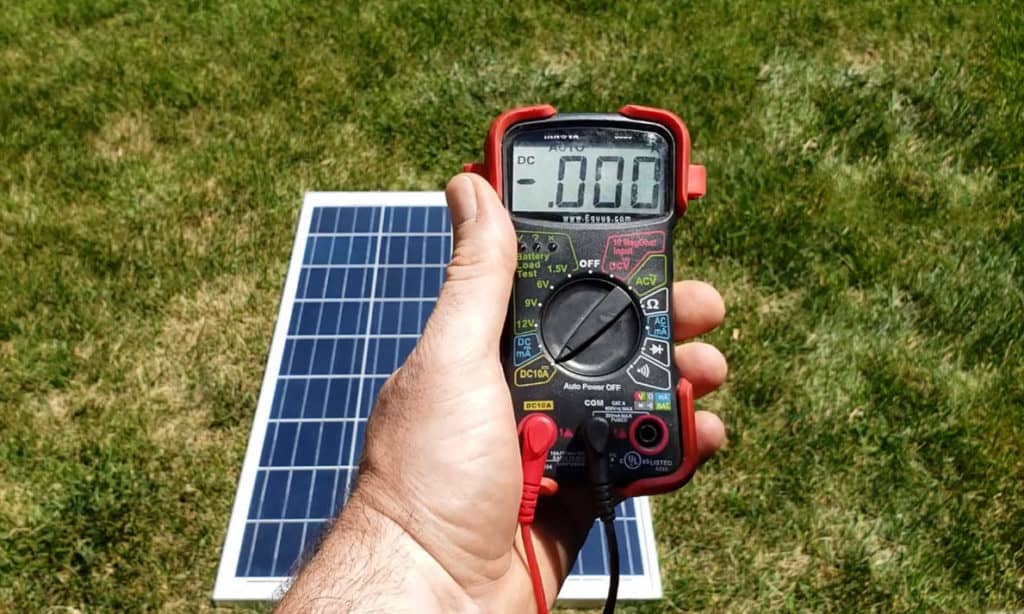Testing whether solar panels are generating sufficient power involves various techniques and measurements to ensure they are operating optimally.
- Measuring Voltage and Current:
- Use a multimeter to measure the voltage and current output of the solar panels. The voltage (Volts, V) should be within the expected range for your panel configuration, and the current (Amperes, A) should match the panel’s rated current. Multiply voltage and current to calculate the panel’s instantaneous power output in watts (W).
- I-V Curve Testing:
- An I-V curve tracer is a specialized tool for measuring the current-voltage (I-V) characteristics of a solar panel under various conditions. It can provide detailed data on a panel’s performance, including maximum power point (MPP) voltage and current.
- Pyranometer or Solar Irradiance Sensor:
- Install a pyranometer or solar irradiance sensor near the solar panels to measure the amount of sunlight (solar irradiance) falling on them. Comparing the measured irradiance to the expected or rated irradiance can help assess the panels’ performance.
- Temperature Measurement:
- Measure the temperature of the solar panels using a temperature sensor or infrared thermometer. High panel temperatures can reduce efficiency. Compare the temperature to the expected operating range for your panels.
- Inverter Monitoring:
- Many solar installations use inverters that have built-in monitoring systems. These systems can provide real-time data on power production, including total energy output, current power generation, and historical performance.
- Shading Analysis:
- Perform shading analysis to identify any obstructions or shading that may affect the panels’ performance. Tools like shading analysis software or solar path diagrams can help assess shading impacts.
- Visual Inspection:
- Visually inspect the solar panels for physical damage, dirt, debris, or any signs of wear and tear. Cleaning the panels if necessary can improve their performance.
- Electroluminescence Imaging:
- Electroluminescence (EL) imaging is a technique used to detect defects in solar cells. It involves taking images of the solar panel in the dark while applying a voltage to the cells. EL imaging can reveal cell cracks or damage not visible to the naked eye.
- Performance Ratio Calculation:
- Calculate the performance ratio, which is a ratio of the actual energy output to the expected energy output under ideal conditions. A lower performance ratio may indicate issues with the solar panels or system.
- Professional Inspection and Maintenance:
- Periodically, it’s advisable to have a professional solar technician or installer inspect your solar system and perform routine maintenance, including cleaning, tightening connections, and checking for any issues.
Regular testing and monitoring of your solar panels are essential to ensure they are generating sufficient power over their lifespan.


